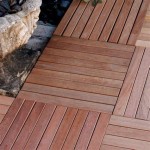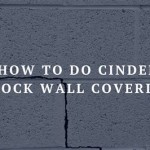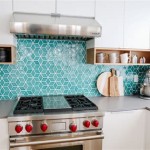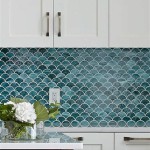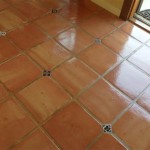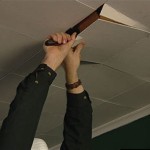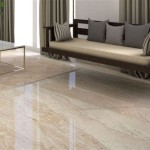Can You Tile On Cinder Block?
Cinder block, a common building material known for its durability and affordability, is frequently used in basements, garages, and exterior walls. Its rough, porous surface, however, raises the question of whether it can serve as a suitable substrate for tiling. The answer, in short, is yes, but with careful preparation and the right techniques.
Tiling directly onto bare cinder block is not recommended. The porous nature of cinder block allows it to absorb moisture, which can compromise the adhesive bond of the tile over time. Additionally, the uneven surface can make it difficult to achieve a level tile installation, resulting in lippage and an unprofessional finish.
Proper surface preparation is key to a successful tile installation on cinder block. This involves cleaning the cinder block surface thoroughly to remove any dust, dirt, debris, or efflorescence. Efflorescence, a white, powdery substance, is a common occurrence on cinder block and is caused by salts migrating to the surface. A stiff brush and a mild acid solution can effectively remove efflorescence.
Once the cinder block is clean and dry, applying a concrete sealer is crucial. This sealer acts as a barrier, preventing the cinder block from absorbing moisture from the thin-set mortar used to adhere the tiles. This ensures a strong bond and prevents the tiles from loosening or cracking over time. Allow the sealer to dry completely according to the manufacturer's instructions before proceeding.
After sealing, a layer of cement backer board is often recommended, particularly in wet areas like showers or bathroom walls. Cement backer board provides a smooth, stable surface for tile installation and enhances the moisture resistance of the system. It is attached to the cinder block using specialized screws designed for concrete and masonry. The joints between the backer board panels should be taped and filled with thin-set mortar to create a seamless surface.
In some cases, particularly for dry areas like garage floors, applying a thick layer of thin-set mortar directly over the sealed cinder block may suffice. This method, often referred to as a “scratch coat,” helps level the surface and provides a suitable base for the tile. The mortar should be allowed to cure completely before tiling.
Choosing the right type of thin-set mortar is another essential factor for successful tile installation on cinder block. A modified thin-set mortar, formulated with polymers for enhanced adhesion and flexibility, is recommended. This type of mortar is better suited for the demanding conditions presented by cinder block substrates.
When tiling on cinder block walls, it's important to consider the weight of the tiles. Larger, heavier tiles may require additional support. A metal lath can be attached to the cinder block before applying the cement backer board or scratch coat to provide extra reinforcement and prevent the tiles from pulling away from the wall.
For exterior cinder block applications, choosing frost-resistant tiles and a modified thin-set mortar rated for exterior use is critical. Temperature fluctuations and freeze-thaw cycles can cause non-frost-resistant tiles to crack and the adhesive bond to fail. Consult with a tile supplier to ensure the selected materials are appropriate for the specific climate and application.
Grouting is the final step in the tile installation process. Choose a grout that is suitable for the type of tile and the application. Sanded grout is typically recommended for wider grout lines, while unsanded grout is suitable for narrower grout lines. Apply the grout according to the manufacturer's instructions and allow it to cure completely before sealing the grout lines to protect them from staining and moisture penetration.
Regular maintenance is important to ensure the longevity of the tile installation. Clean the tiles and grout regularly with appropriate cleaning products, and inspect the grout lines periodically for any signs of cracking or deterioration. Address any issues promptly to prevent further damage.
Different types of tile can be used on cinder block, including ceramic, porcelain, and natural stone. However, the specific requirements for each type of tile may vary. Consult with a tile supplier or professional installer to determine the best approach for the chosen tile and application.
While tiling on cinder block requires careful planning and execution, it is a viable option for many projects. By following the proper preparation steps and choosing the right materials, a durable and aesthetically pleasing tile installation can be achieved on this versatile building material.

Tile Over Blockwork Mike Haduck
Slate Over Cinder Blocks Ceramic Tile Advice Forums John Bridge

How To Install Ceramic Tile Over Painted Block Walls For A Shower Ehow
Shower Pan In Bathroom With Cinder Block Walls Ceramic Tile Advice Forums John Bridge

From Cinderblock To A Mediterranean Mood In One Afternoon Justina Blakeney

Latest Project Cinder Block And Tiles If I Can Do This Anyone Garden Ideas Patio Landscaping Boxes

How To Install Ceramic Tiles On A Beautiful Concrete Wall Easily Construction Houses Step By

How To Install Tile On Cinder Block Hunker Walls Wall

How To Stencil Cinderblock Planters Stories

Can You Tile Cinder Block Walls And How To Basementing Com
Related Posts

